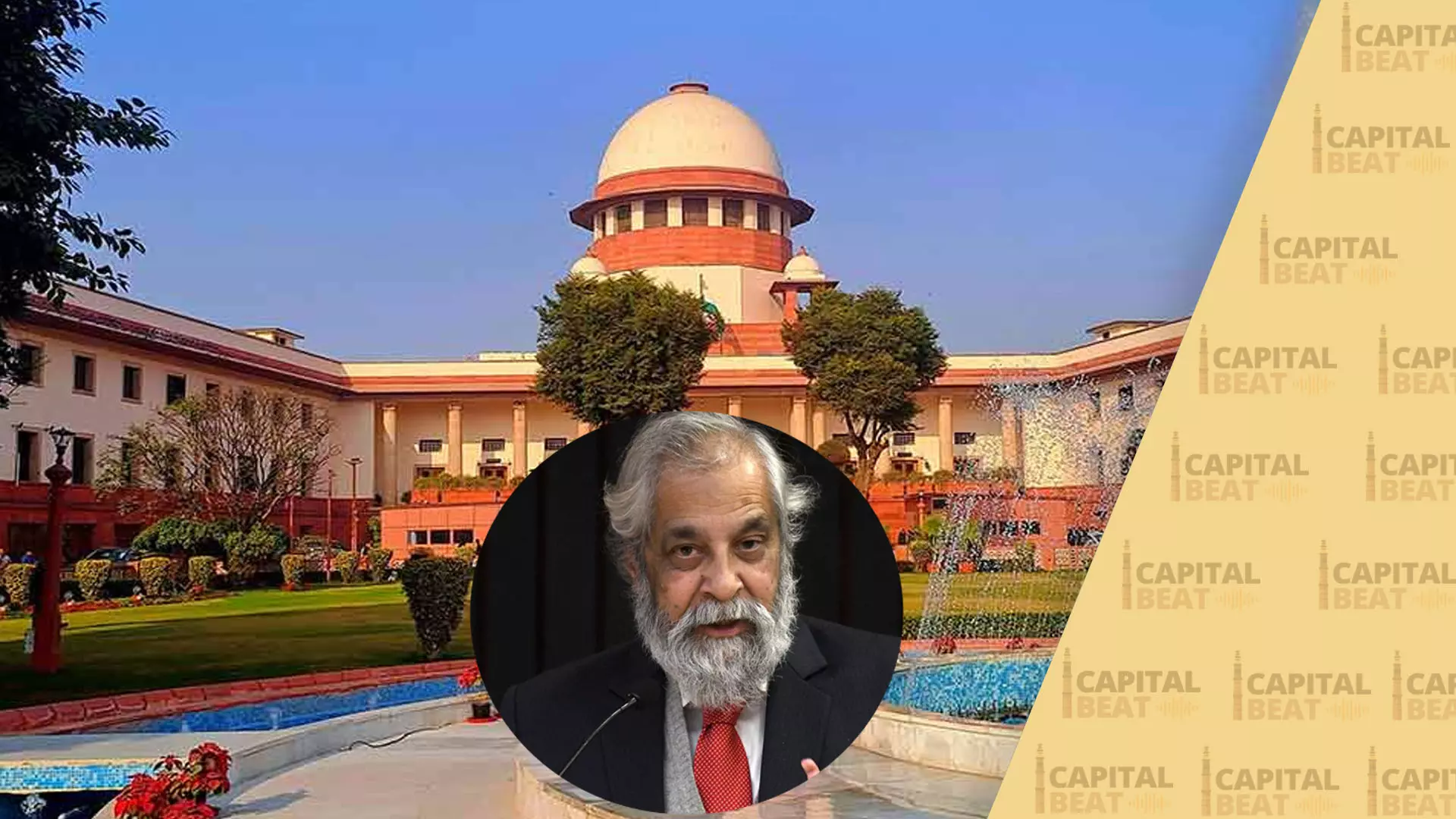
‘Justice Vipul Pancholi’s promotion to SC unprecedented, but not wrong’ | Capital Beat
Ex-SC judge Justice Madan B Lokur slams overlooking of women judges to make way for Pancholi, says consistent policy is needed for the elevation of judges

In this episode of Capital Beat, former Supreme Court judge Justice Madan B Lokur spoke with Neelu Vyas about the controversy surrounding the elevation of Patna High Court Chief Justice Vipul Pancholi as a Supreme Court judge. The Campaign for Judicial Accountability and Reform (CJAR) has slammed the decision, citing Justice BV Nagarathna’s dissent note and raising concerns over transparency in collegium functioning. In an interview, Justice Lokur shared his perspective on the unprecedented situation and what it means for the credibility of the judiciary.
What are your first thoughts on the collegium’s decision to elevate Justice Vipul Pancholi despite a dissent note from Justice BV Nagarathna?
I am not sure if anything has gone wrong with the collegium. It was a 4:1 decision, which is permissible under the Memorandum of Procedure. The procedure was followed: a meeting was held, views were exchanged, and one judge disagreed. A majority decision can be acted upon, and that is what has happened.
Also read: Commercial vs free speech: 5 key points made by SC in comedians’ case
Concerns have been raised that Justice Pancholi is only 57th in the all-India seniority list and would be the third judge from Gujarat. Does this raise disproportionality questions?
Regional representation has always been debated. There have been instances where four judges from the Bombay High Court or Delhi High Court were on the bench at the same time. While it is unusual to have three judges from Gujarat, it is not unprecedented to have multiple judges from one court.
As for seniority, exceptions have existed before. Justice Sanjiv Khanna was appointed when he was 33rd in seniority, and Justice Ruma Pal was around 58th. These things happen. Why exactly the collegium chose Justice Pancholi despite his position in seniority is something only they can answer.
Justice Nagarathna’s dissent note is being reported in parts by the media. Shouldn’t it be made public for transparency?
We do not know the full contents of the dissent note. Leaking of portions without the entire note being published is equally unethical. Either publish it in full or not at all. This is unprecedented — I cannot recall another instance of a collegium dissent note. The Supreme Court must now decide how such situations should be handled in the future.
Also read: SC stays FIRs against psephologist Sanjay Kumar for ‘erroneous’ info on electoral rolls
Senior advocate Indira Jaising has flagged that three senior women judges — Justice Sunita Agarwal, Justice Revati Mohite Dere, and Justice Lisa Gill — were overlooked. How do you view this?
It is not a good sign to overlook women judges, especially if they are meritorious. Justice Agarwal, for example, has been overlooked before. Transparency would require the collegium to explain why such judges were bypassed. Otherwise, it naturally raises questions about fairness in the process.
What factors should guide the collegium when deciding elevations? Should there be a uniform policy?
Yes, there should be a consistent written policy. The Memorandum of Procedure already sets some broad contours, like minimum age and income criteria. But more can be added — for instance, gender representation, regional representation within states, legal aid work, and the nature of cases handled. These criteria should be published so that everyone knows the basis for selection.
Some argue that extraneous factors influence appointments. How should the collegium address these perceptions?
Transparency is key. In the past, the Supreme Court has varied in how much it discloses, from publishing intelligence bureau reports to publishing nothing at all. There must be a balance, but more importantly, a consistent policy that doesn’t change with every chief justice.
Also read: Don’t mock the disabled for laughs, publish apology, SC tells comedians
Given this dissent and the debate around it, has the credibility of the collegium been undermined?
I don’t think so. The Memorandum of Procedure allows a 4:1 decision. The issue is unprecedented, but it does not damage the collegium’s credibility. What is required now is a clear decision by the Supreme Court on how to deal with such situations, both in the present and in the future.
Also read: SC reveals assets of top judges: 4BHK, Maruti Swift among CJI’s properties; know more
Finally, with reports of allegations surfacing in the media about judges, do such claims affect appointments?
Allegations must be dealt with carefully. In the past, letters raising concerns about judges were examined, and inquiries or reports were called before appointments were made. But unless the full facts are known and established, speculation does not help the institution.
The content above has been generated using a fine-tuned AI model. To ensure accuracy, quality, and editorial integrity, we employ a Human-In-The-Loop (HITL) process. While AI assists in creating the initial draft, our experienced editorial team carefully reviews, edits, and refines the content before publication. At The Federal, we combine the efficiency of AI with the expertise of human editors to deliver reliable and insightful journalism.

